Impact Testing of Polycarbonate Laboratory Safety Glasses and Facial Shields
Abstract
1. Introduction
2. Materials and Methods
2.1. Use of a 22 Rifle
2.2. Use of an Air Rifle
2.3. Materials and Supplies
2.4. Hazards
3. Results and Discussion
3.1. Impact of a 22 Long Rifle Bullet
3.2. Impact of an Air Gun Pellet
3.2.1. Pellets
3.2.2. Pellet Guns
3.2.3. Dieseling
3.3. Initial Tests on Polycarbonate Sheets
3.4. Testing of Safety Glasses and Facial Shield
3.5. Recommendations
3.6. Testing of Protective Glasses and Facial Shields for Damage
3.7. Classroom Discussion
4. Conclusions
Funding
Institutional Review Board Statement
Informed Consent Statement
Data Availability Statement
Acknowledgments
Conflicts of Interest
Abbreviations
| gr | grains |
| LR | long rifle |
References
- American Chemical Society. Guidelines for Chemical Laboratory Safety in Academic Institutions; American Chemical Society (ACS): Washington, DC, USA, 2016; Available online: https://www.acs.org/content/dam/acsorg/about/governance/committees/chemicalsafety/publications/acs-safety-guidelines-academic.pdf (accessed on 26 June 2025).
- Wang, W.; Su, Y.; Cao, H.; Li, D. Enhancing Chemical Laboratory Safety with Hazards Risks Mitigation and Strategic Actions. Laboratories 2025, 2, 5. [Google Scholar] [CrossRef]
- Love, T.S.; Roy, K.R.; West, S.S. A Call to Prioritize Safety in STEM and CTE: Addressing Overcrowded Classes and Other Critical Safety Issues. Laboratories 2024, 1, 52–58. [Google Scholar] [CrossRef]
- The National Institute for Occupational Safety and Health (NIOSH). School Chemistry Laboratory Safety Guide; The National Institute for Occupational Safety and Health (NIOSH): Washington, DC, USA, 2007. Available online: https://www.cdc.gov/niosh/docs/2007-107/default.html (accessed on 26 June 2025).
- OSHA 3404-11R 2011; Laboratory Safety Guidance Occupational Safety and Health Administration U.S. Department of Labor: Washington, DC, USA, 2011. Available online: https://www.osha.gov/sites/default/files/publications/OSHA3404laboratory-safety-guidance.pdf (accessed on 26 June 2025).
- Smith, D.T. Shields and Barricades for Chemical Laboratory Operations. J. Chem. Educ. 1964, 41, A520–A522, A527. [Google Scholar] [CrossRef]
- Hawkes, S.J. Polymeric, Metallic, and Other Glasses in Introductory Chemistry. J. Chem. Educ. 2008, 85, 1377–1380. [Google Scholar] [CrossRef]
- Murray, C.; Jenkins, P.; Miller, S. Protective equipment for small-scale laboratory explosive hazards. Part 2. Shielding materials, eye and face protection. J. Chem. Health Saf. 2015, 22, 18–33. [Google Scholar] [CrossRef]
- Quam, G.N.; Shea, J. CXI. Impact Resistance Tests of Contemporary Safety Glasses, Goggles, and Face Shields. J. Chem. Educ. 1974, 51, A85–A87. [Google Scholar] [CrossRef]
- Quam, G.N.; McLane, F. XCVI. High Impact Shielding for Chemists. J. Chem. Educ. 1973, 50, A405. [Google Scholar] [CrossRef]
- Quam, G.N.; Shea, J. XCI. An Investigation of High Impact Body Shields. J. Chem. Educ. 1972, 49, A295–A297. [Google Scholar] [CrossRef]
- Lenses Were a Donation from Sharp Plastics Manufacturing from Delta, BC, Canada. Sharp Plastics is No Longer in Business. These and Similar Types of Polycarbonate Lenses Are Available from Various Manufacturers. The Same Type of Lenses Is Available from Dynamic Labs That Sell Single Lenses. Available online: https://www.dynamiclabs.net/collections/lenses (accessed on 6 May 2025).
- Inoue, T.; Okamoto, H.; Osaki, K. Large Deformation of Polycarbonate near the Glass Transition Temperature. Macromolecules 1992, 25, 7069–7070. [Google Scholar] [CrossRef]
- Hu, W. Personal Perspective on Strain-Induced Polymer Crystallization. J. Phys. Chem. B 2023, 127, 822–827. [Google Scholar] [CrossRef] [PubMed]
- Zhang, X.-X.; Yang, S.-G.; Zhong, G.-J.; Lei, J.; Liu, D.; Sun, G.-A.; Xu, J.-Z.; Li, Z.-M. Rapid Melt Crystallization of Bisphenol-A Polycarbonate Jointly Induced by Pressure and Flow. Macromolecules 2021, 54, 2383–2393. [Google Scholar] [CrossRef]
- Crosman Fast Flight LF1754 Lead-Free .177-Caliber Pointed Pellets. Lead-Free Pellets Are Made of a Proprietary Alloy Whose Composition the Manufacturer Did Not Disclose. Available online: https://www.crosman.com/product/crosman-fast-flight-penetrator-177/ (accessed on 26 June 2025).
- Description of Dieseling. Available online: http://www.pyramydair.com/blog/2007/05/what-does-dieseling-mean-part-1/ (accessed on 14 May 2025).
- Insulgard Security Products. Available online: https://www.insulgard.com/bulletblock/bullet-resistant-laminate-polycarbonate/ (accessed on 14 May 2025).
- ANSI/ISEA Z87.1-2020; American National Standard for Occupational and Educational Personal Eye and Face Protection Devices. International Safety Equipment Association: Washington, DC, USA, 2020; pp. 12–13, 23–24.
- Fivizzani, K.P. The evolution of chemical safety training. Chem. Health Saf. 2005, 12, 11–15. [Google Scholar] [CrossRef]
- Senkbeil, E.G.; Crisp, P. Demonstrations for teaching laboratory safety. Chem. Health Saf. 2004, 11, 17–24. [Google Scholar] [CrossRef]
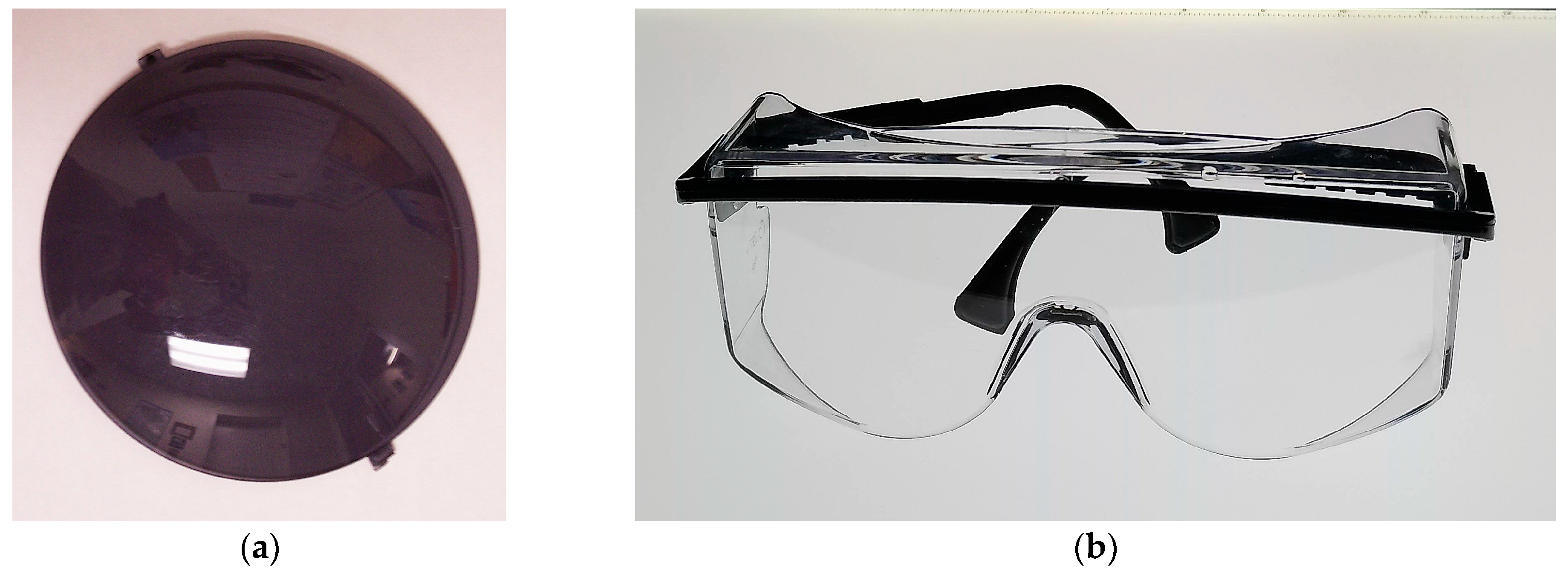
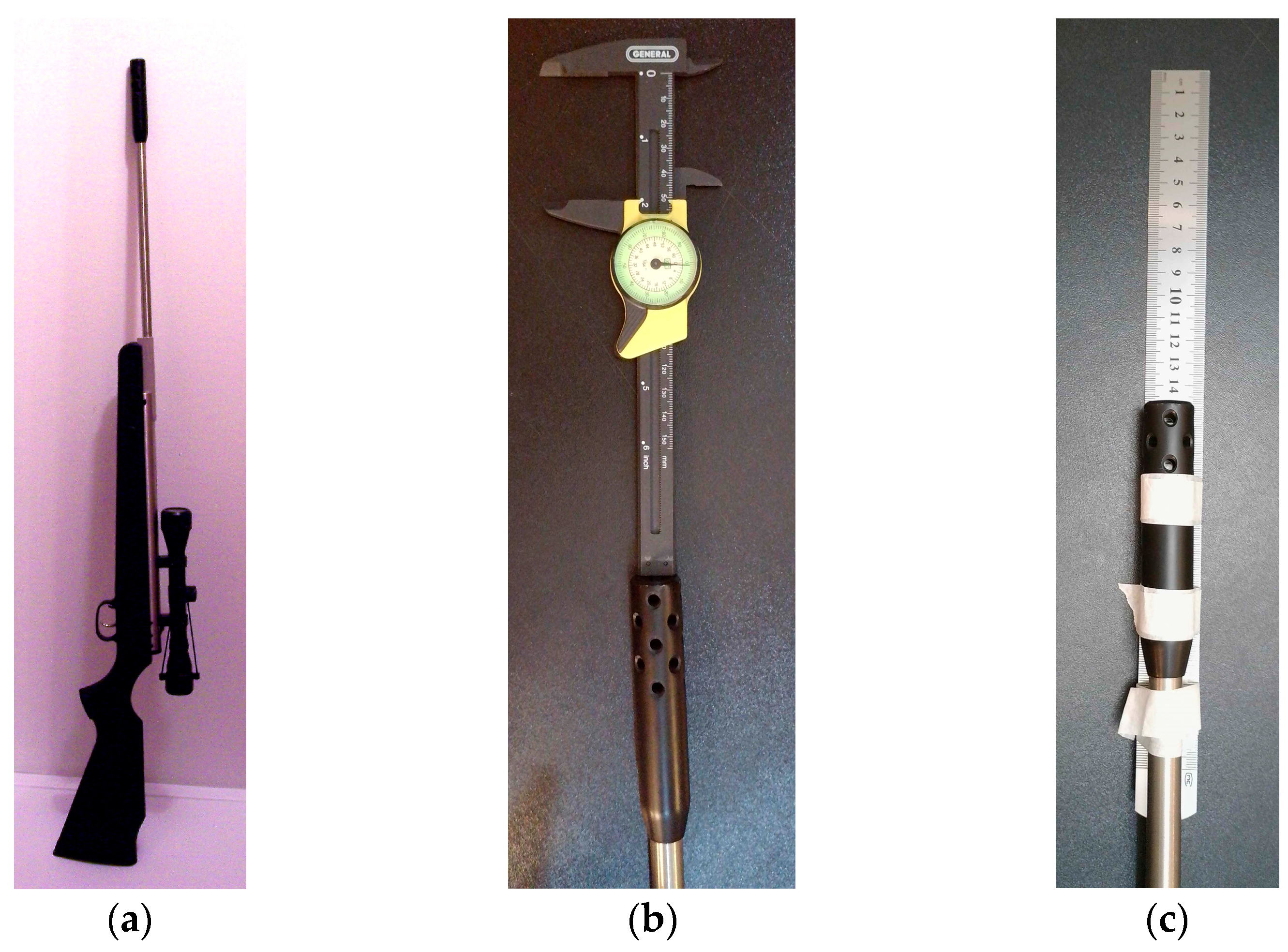

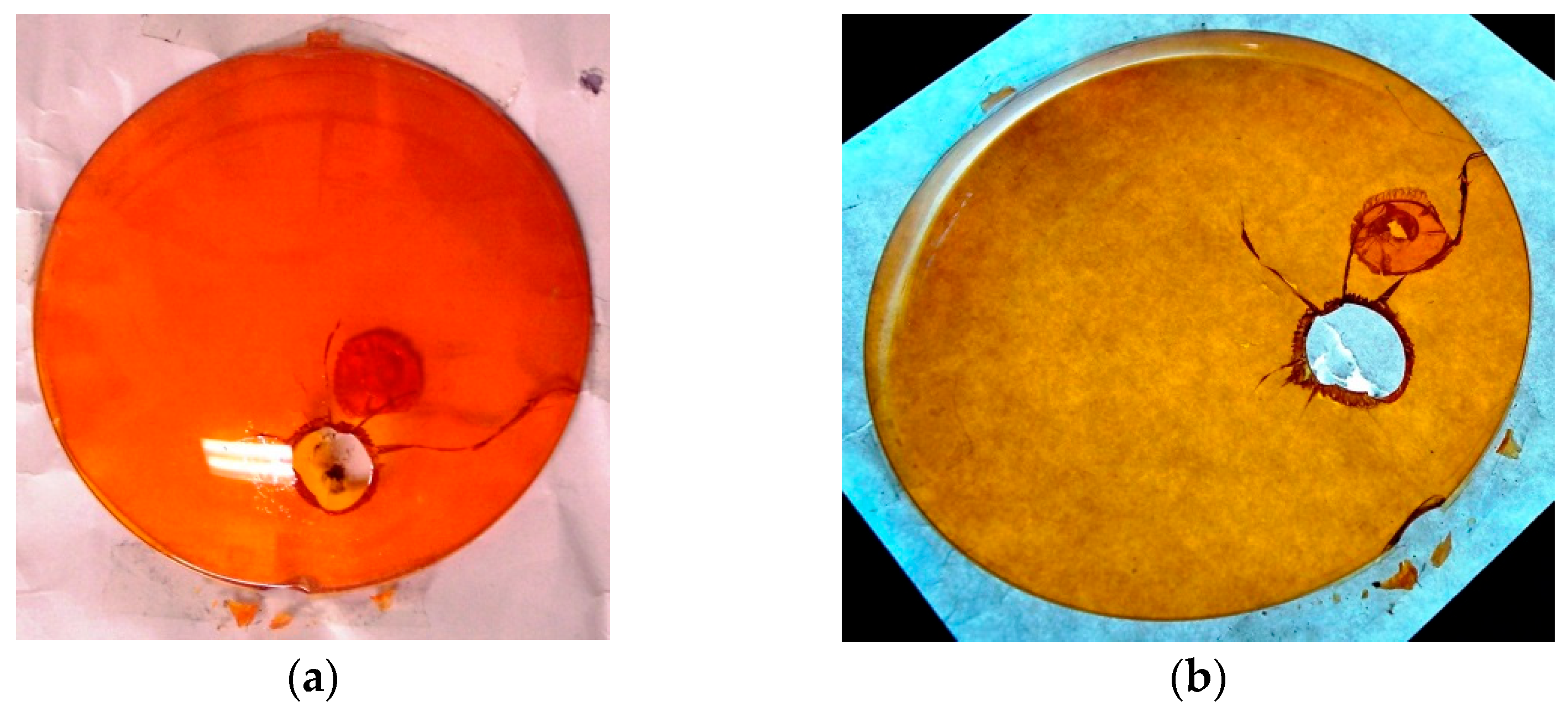


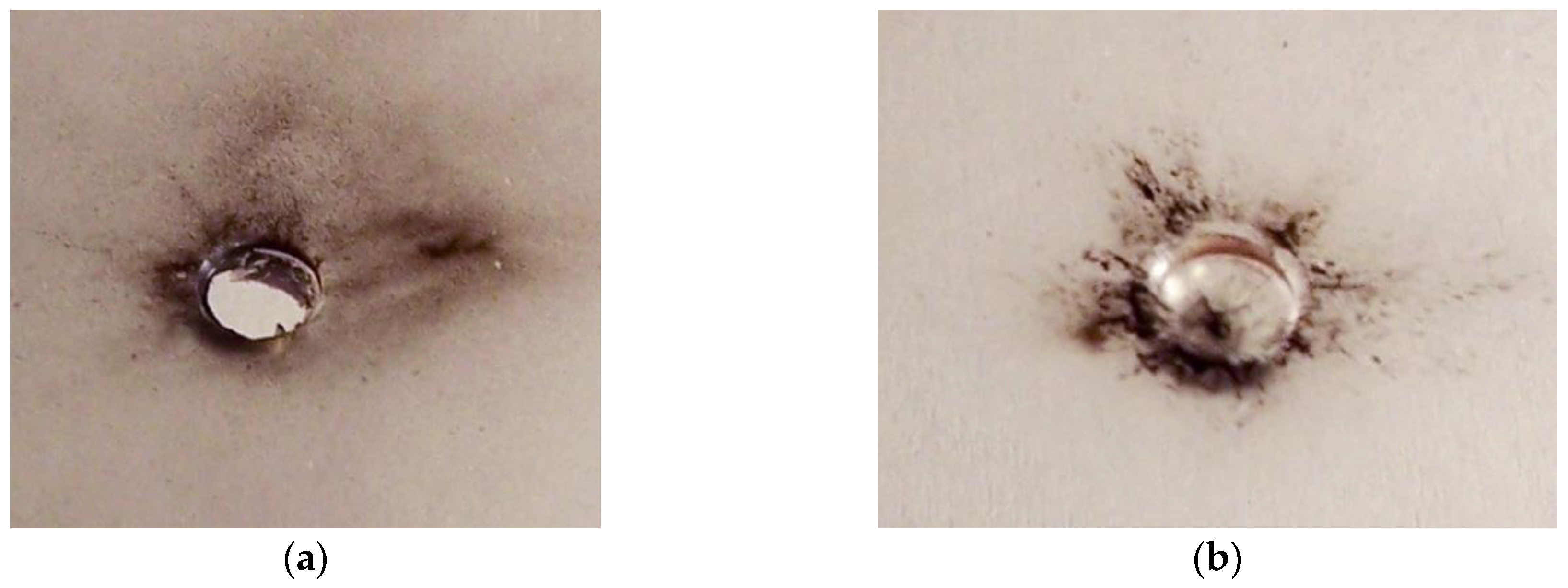
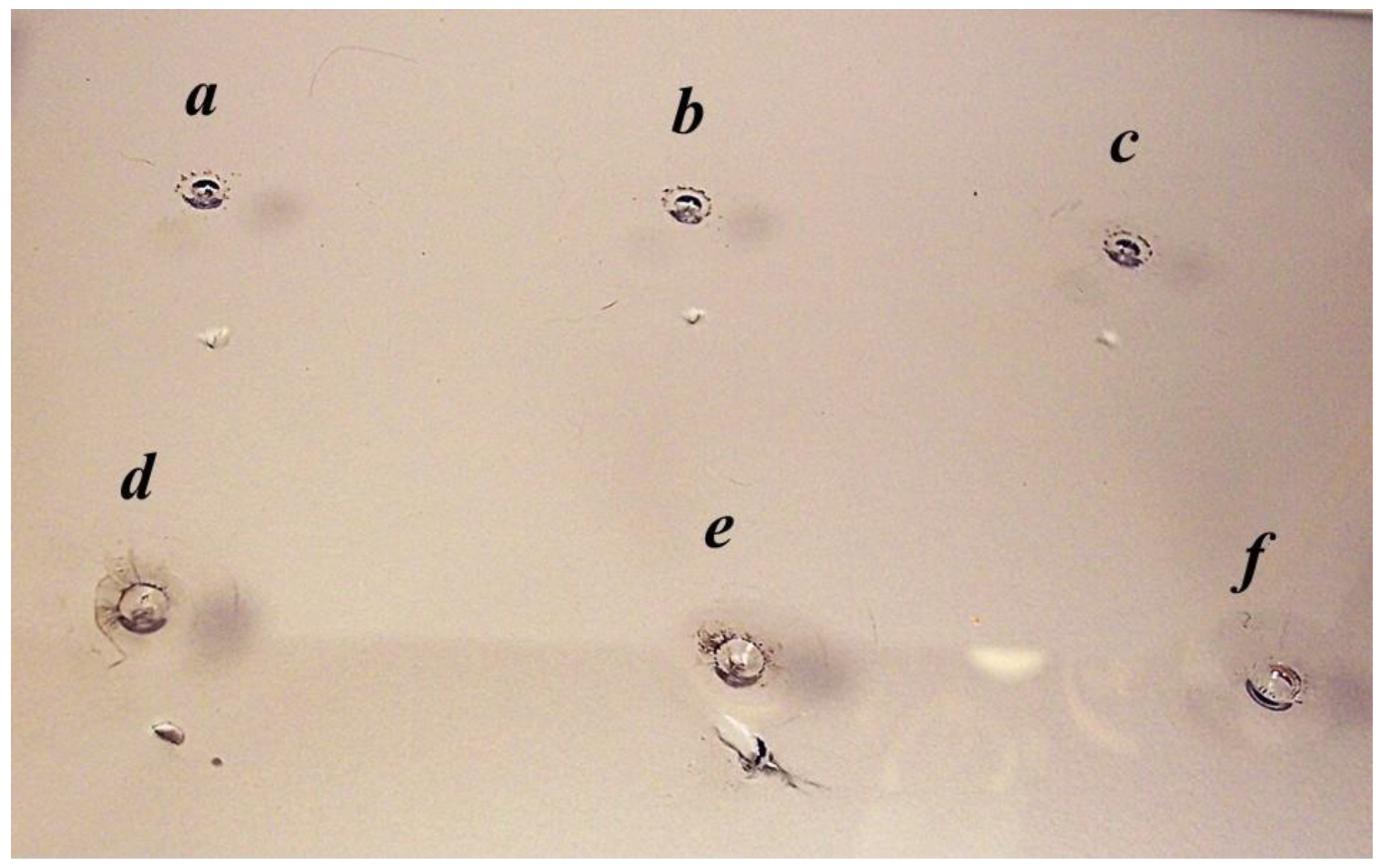
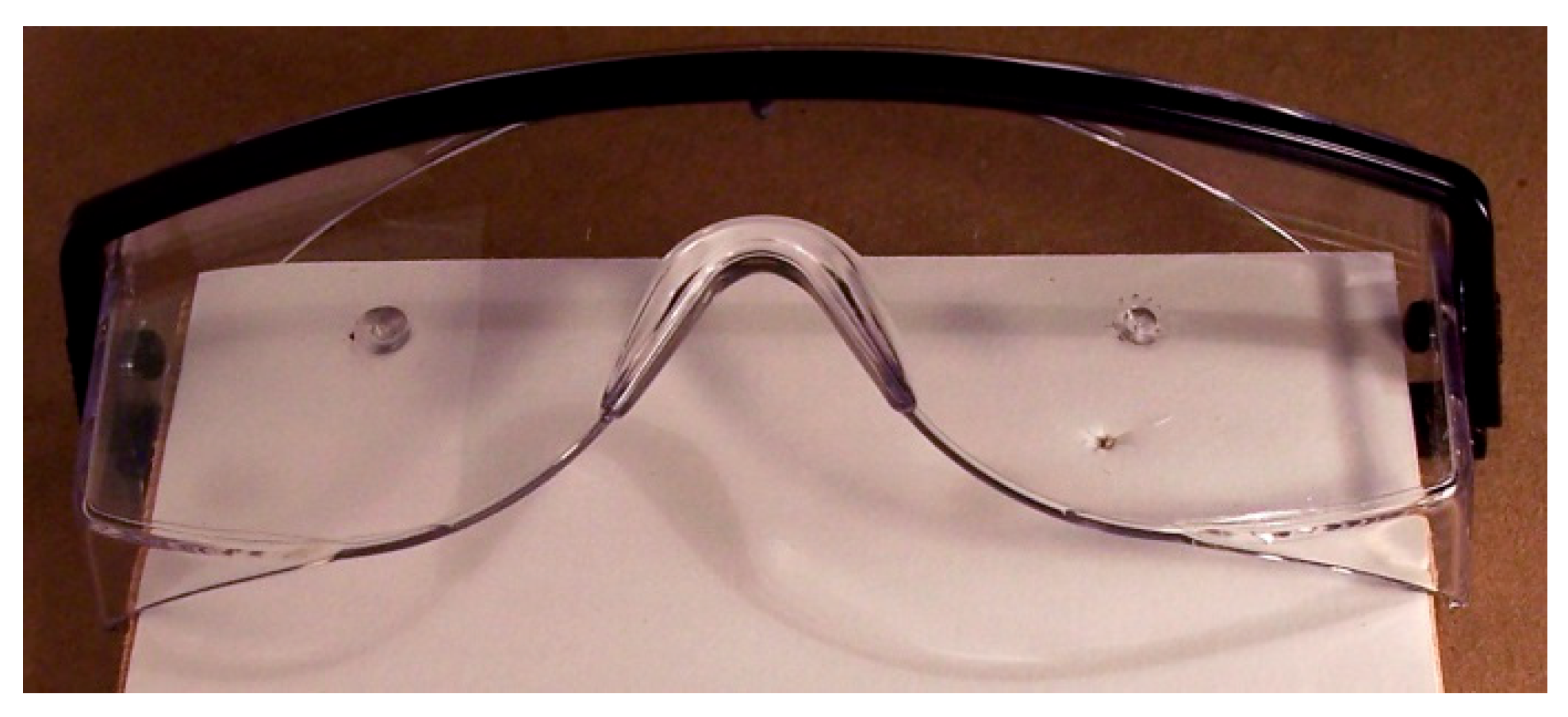

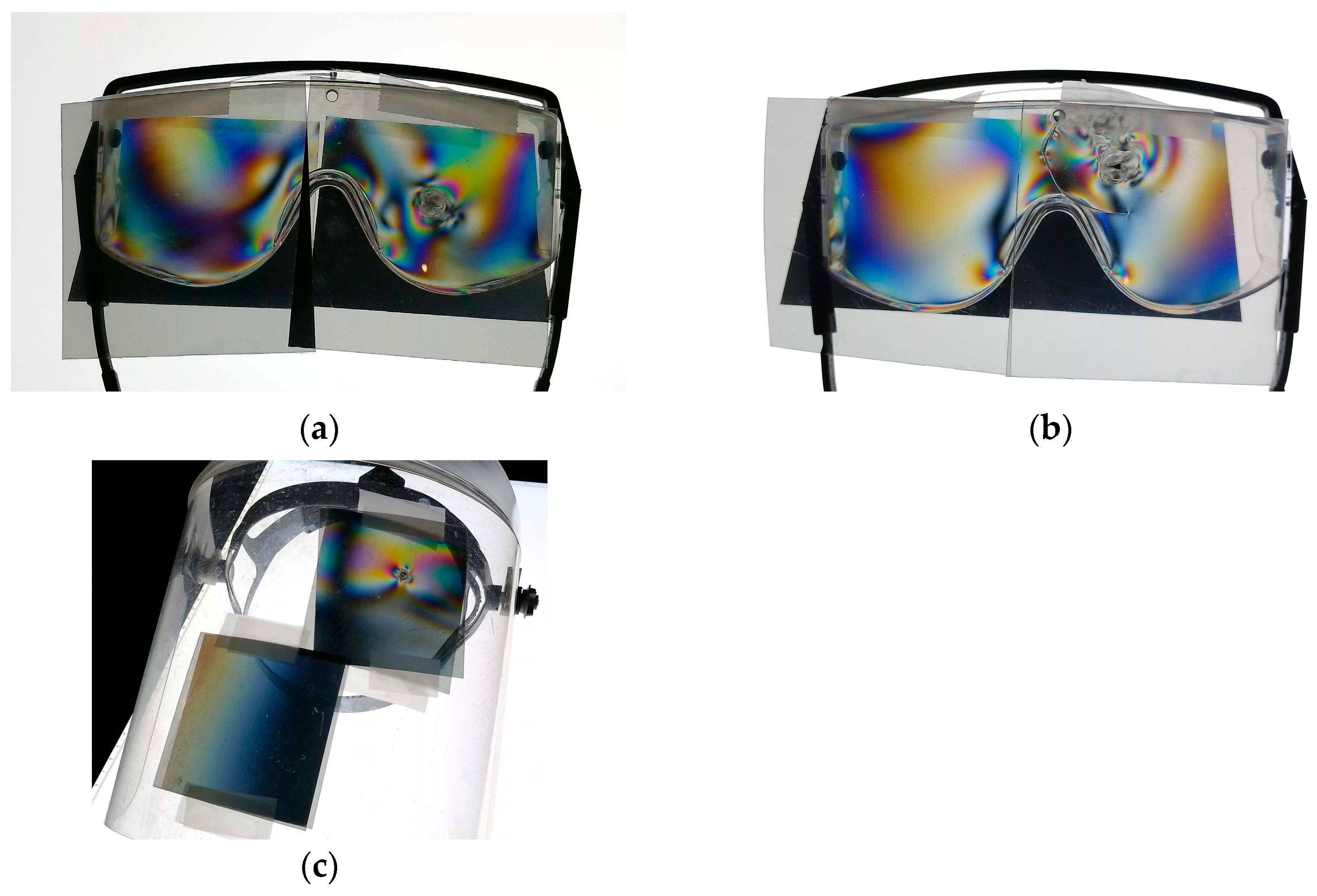

| Entry | Bullet Type | Description | Weight 1 (g) | Velocity 2 (m s−1) 3 | Result of the Impact |
|---|---|---|---|---|---|
| 1 | 22 LR | Wax-coated lead bullet | 2.59 | 326.1 | Crater with a central peak |
| 2 | 22 LR subsonic | Wax-coated lead bullet | 2.59 | 216.4 | Crater with a central peak |
| 3 | 22 LR copper jacket | Copper-jacketed lead bullet | 2.59 | 376.4 | Lens shattered |
| 4 | 22- LR copper jacket subsonic | Copper-jacketed lead bullet | 2.14 | 225.6 | Lens shattered |
| 5 | 22 LR copper hollow point | Copper-jacketed hollow-point lead bullet | 2.33 | 384.0 | Passed through and left a large round hole. |
Disclaimer/Publisher’s Note: The statements, opinions and data contained in all publications are solely those of the individual author(s) and contributor(s) and not of MDPI and/or the editor(s). MDPI and/or the editor(s) disclaim responsibility for any injury to people or property resulting from any ideas, methods, instructions or products referred to in the content. |
© 2025 by the author. Licensee MDPI, Basel, Switzerland. This article is an open access article distributed under the terms and conditions of the Creative Commons Attribution (CC BY) license (https://creativecommons.org/licenses/by/4.0/).
Share and Cite
Dragojlovic, V. Impact Testing of Polycarbonate Laboratory Safety Glasses and Facial Shields. Laboratories 2025, 2, 16. https://doi.org/10.3390/laboratories2030016
Dragojlovic V. Impact Testing of Polycarbonate Laboratory Safety Glasses and Facial Shields. Laboratories. 2025; 2(3):16. https://doi.org/10.3390/laboratories2030016
Chicago/Turabian StyleDragojlovic, Veljko. 2025. "Impact Testing of Polycarbonate Laboratory Safety Glasses and Facial Shields" Laboratories 2, no. 3: 16. https://doi.org/10.3390/laboratories2030016
APA StyleDragojlovic, V. (2025). Impact Testing of Polycarbonate Laboratory Safety Glasses and Facial Shields. Laboratories, 2(3), 16. https://doi.org/10.3390/laboratories2030016






